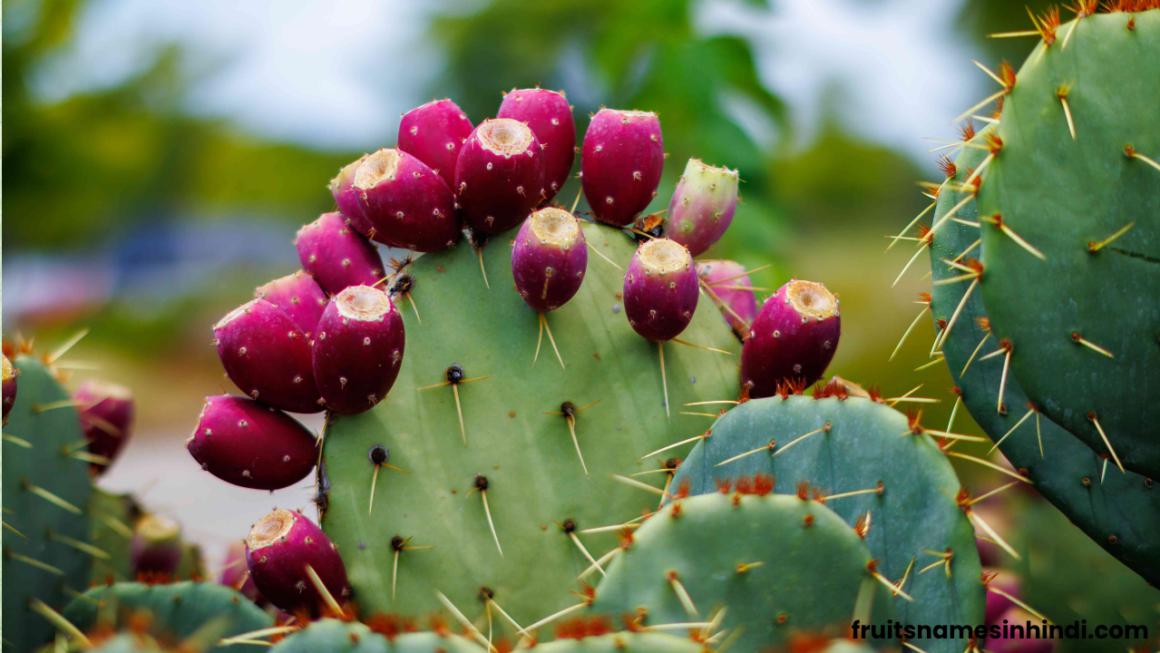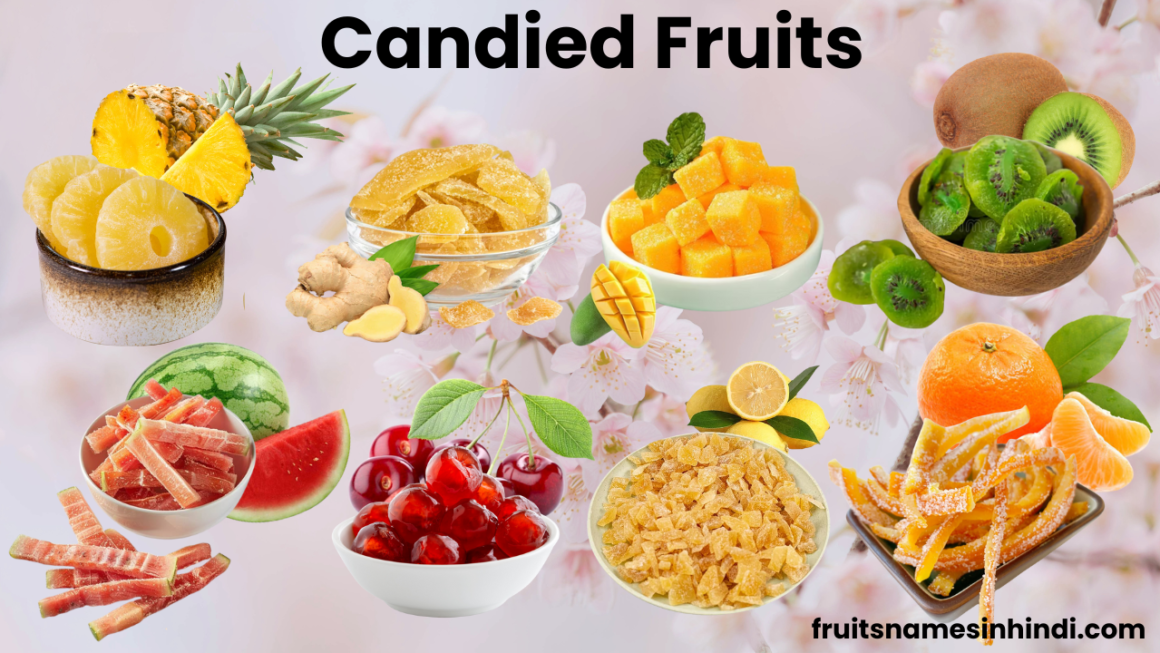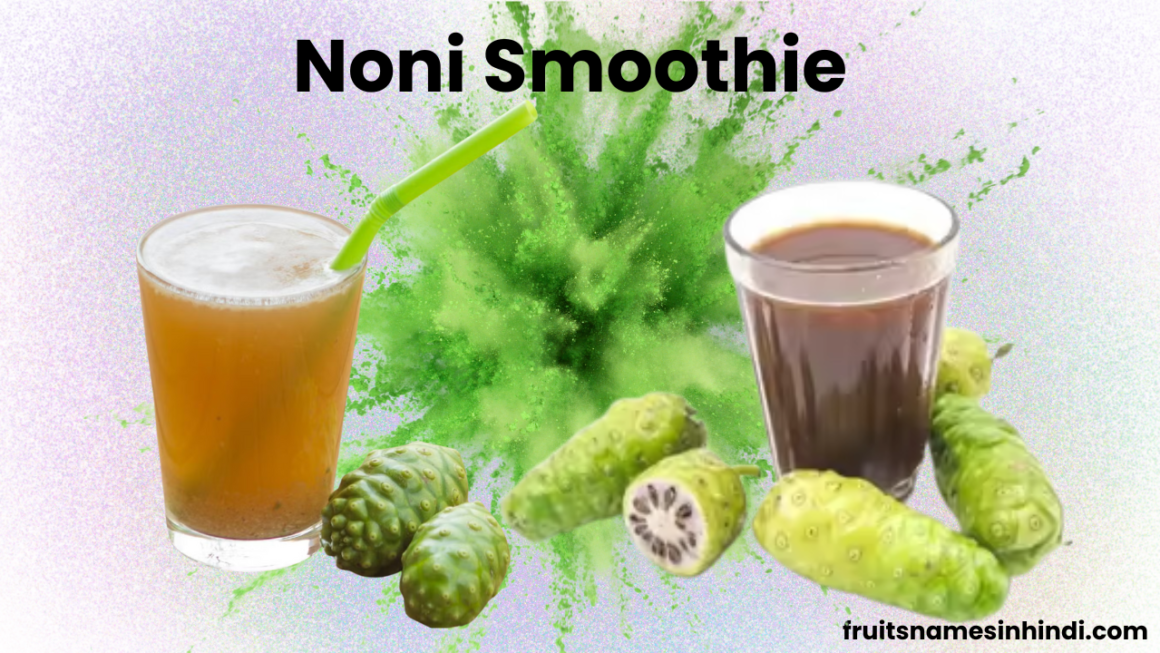Vegetables Name: A Complete Guide to 120+ Vegetables Name in Hindi and English
Today, the Vegetables name in English are a necessity for most people. Whether in a curry or a salad, vegetables add taste, essential nutrients and interest to our plate. But how many people have tripped over words while trying to Vegetables Name for someone in another language – Hindi or English? Whether you are a language learner, a parent or career of young children, or just interested in expanding your knowledge, this Vegetables Name Guide will help you learn more than 120 vegetable names in both Hindi and English easily.
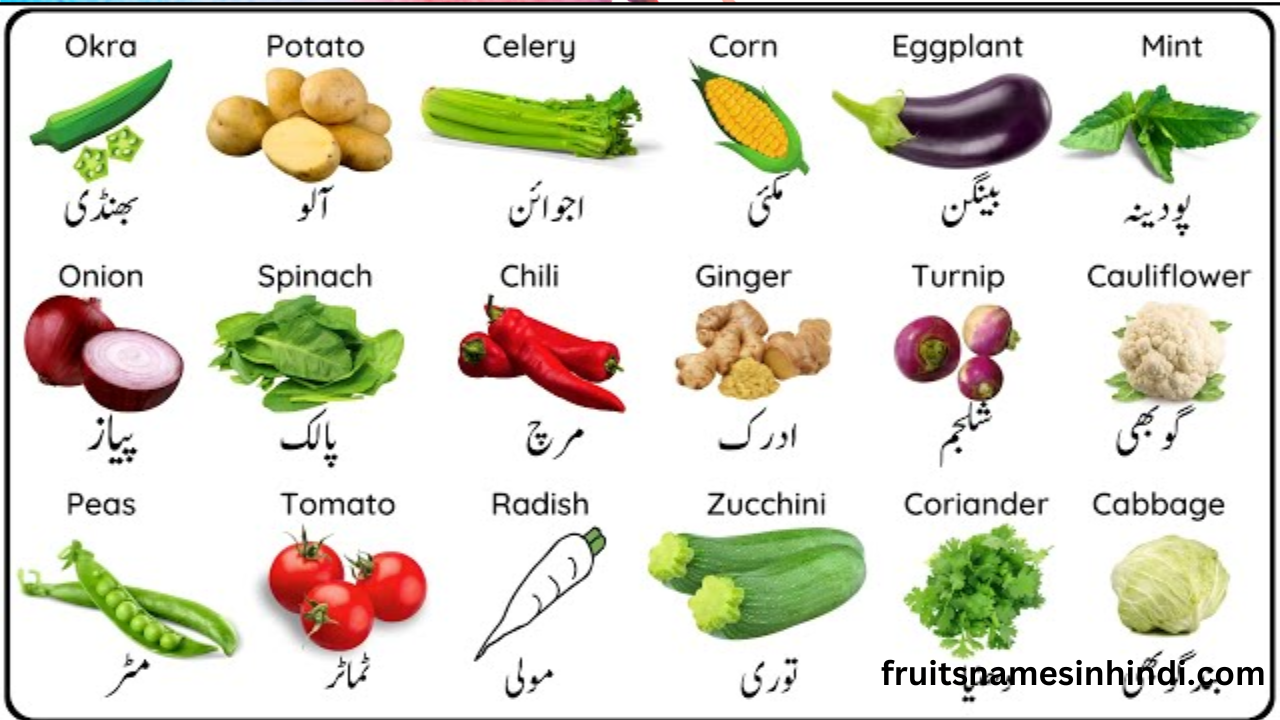
In this article, there is a clean list of vegetables, more ideas for children, and exciting vegetable facts. Let’s dive in!
How Could 10 Vegetables Name:
1.Cultural and Culinary Relevance:
Vegetables have tremendous importance in India to the tune of their meals and recipes. It is useful to know them so as to comprehend recipes, buy groceries and get acquainted with people from other areas. For instance, the names Palak Paneer (spinach curry with cottage cheese) or the Baingan Bharta (roasted eggplant) are easily understandable if one recognizes the vegetables.
2. Great for Language Learners
Whether you’re a native Hindi speaker learning English or the other way around, just learning the Vegetables Name is very practical. It is particularly helpful if you are a traveler, a child, or indeed engaging with Hindi-speaking people in any way.
3. Improves Vocabulary for Kids
Rewarding kids with points and name aids their learning about vegetables. Not only does it help them learn something, which is educational, but it also helps them to, in the same process, pick new words and develop more healthy eating habits.
A categorized list of 35 Vegetables Name:
Here, we have grouped the vegetables for your ease according to their type; the following are some of them. Let’s explore!
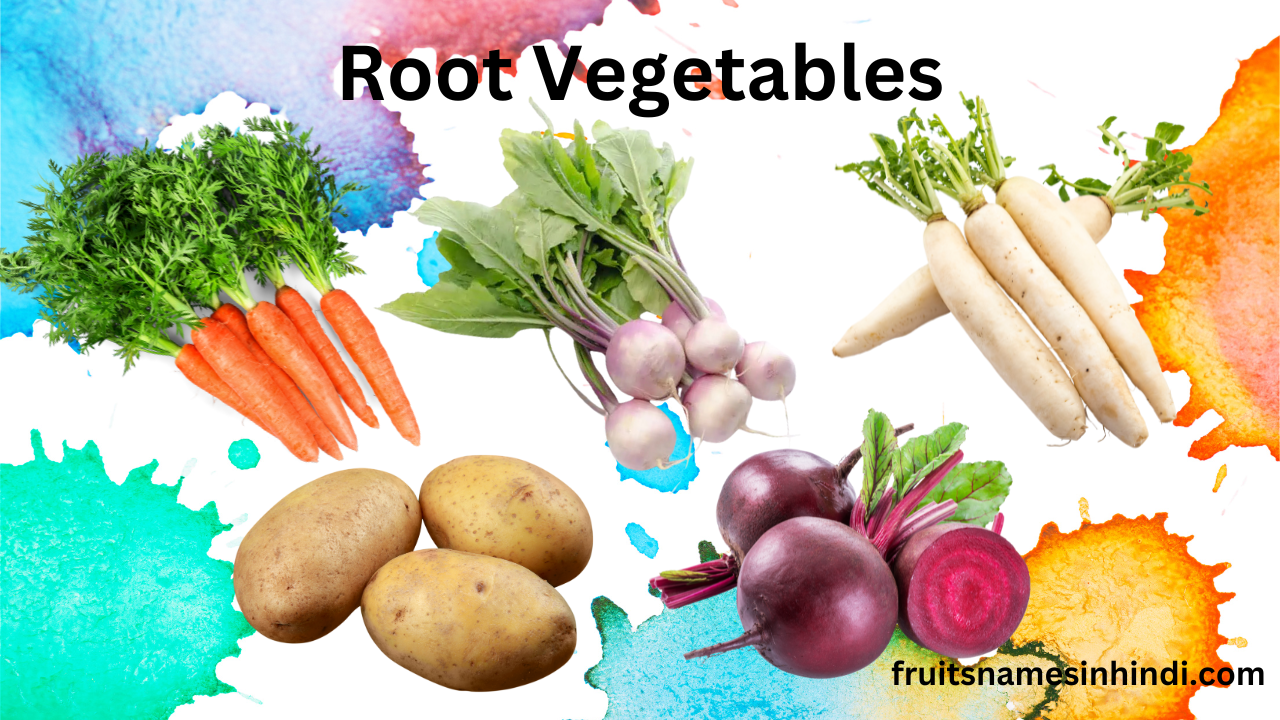
A. Root Vegetables (Jadwali Vegetables Name)
- Potato – Aloo
- Carrot – Gajar
- Beetroot – Chukandar
- Radish – Mooli
- Turnip – Shalgam
- Sweet Potato – Shakarkandi
- Yam – Suran
B. Leafy Greens (Hari Patewali Sabjiyan)
- Spinach – Palak
- Fenugreek – Methi
- Coriander – Dhania
- Mustard Greens – Sarson
- Mint – Pudina
- Curry Leaves – Kadhi Patta
- Lettuce – Salad Patta
- Collard Greens – Haak
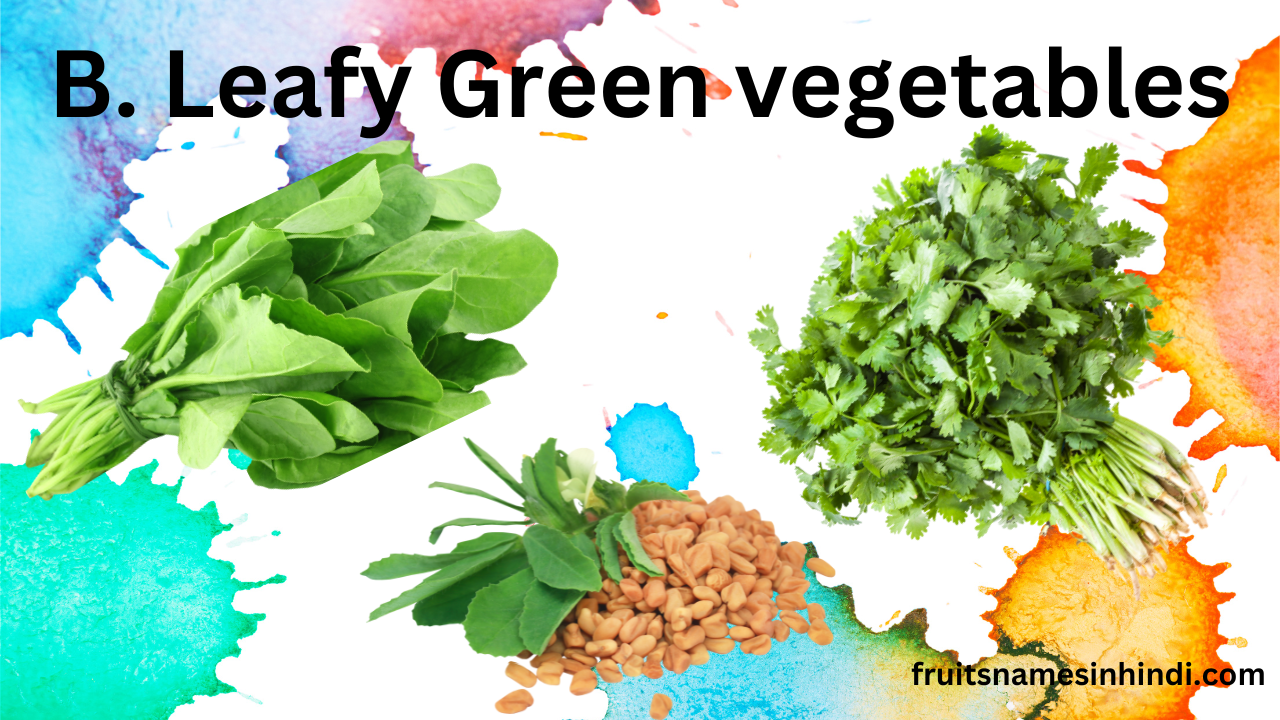
C. Fruiting Vegetables (Falwali Sabjiyan)
- Tomato – Tamatar
- Brinjal – Baingan
- Cucumber – Kheera
- Capsicum – Shimla Mirch
- Pumpkin – Kaddu
- Bitter Gourd – Karela
- Bottle Gourd – Lauki
- Ridge Gourd – Turai
- Snake Gourd – Chichinda
- Zucchini – Turai
D. Legumes and Pods (Phaliyan aur Daalen)
- Green Beans – Hari Phali
- Peas – Matar
- Chickpeas (Green) – Hara Chana
- Lentils (Sprouts) – Ankurit Dal
- Broad Beans – Sem Phali
- E. Exotic and Lesser-Known Vegetables4
- Asparagus – Shatavar
- Broccoli – Hari Gobi
- Artichoke – Hathidant
- Celery – Ajmoda
- Kale – Kale Patte
- Parsnip – Chhoti Gajar
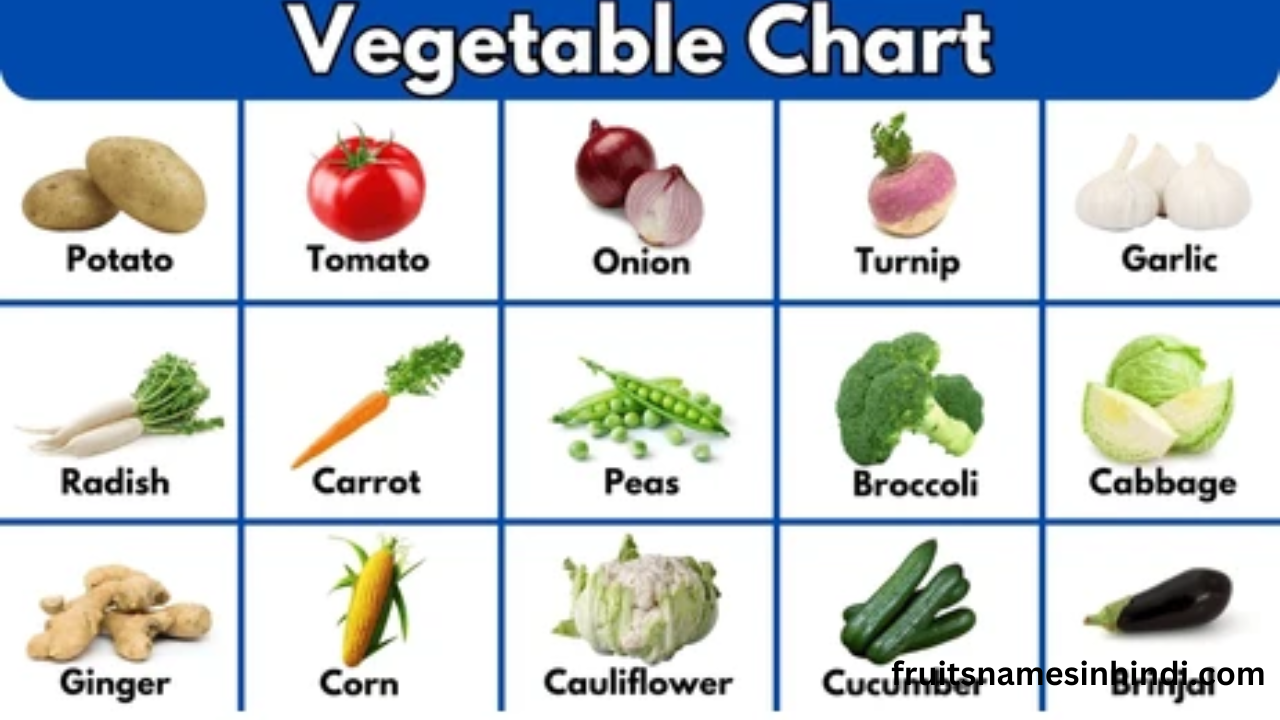
Commonly Green vegetables Names:
Some vegetables are either named alike or may look somewhat identical. Here are a few examples:
- Pumpkin (Kaddu) vs. Bottle Gourd (Lauki): One is round and orange, the other is long and green; Kaddu and Lauki are different in appearance.
- Zucchini (Turai) vs. Ridge Gourd (Turai): Although these two products have the same name in Hindi they are different in their texture and taste as well.
- Green Chili (Hari Mirch) vs. Capsicum (Shimla Mirch): The former is hot or pungent, and the latter is sweet.
Fun Facts About Vegetables:
Tomato is a Fruit! Yes, they are; according to scientific classification, a tomato is a fruit, but it is used in cooking like a vegetable.
- Broccoli and Cauliflower are Cousins: Both are varieties of the same species, which is brassica oleracea.
- India is the Largest Producer of Okra (Bhindi): This vegetable originates from India and is commonly used in Indian cooking.
- Carrots Were Not Always Orange: The first carrots have purple, yellow or white color!
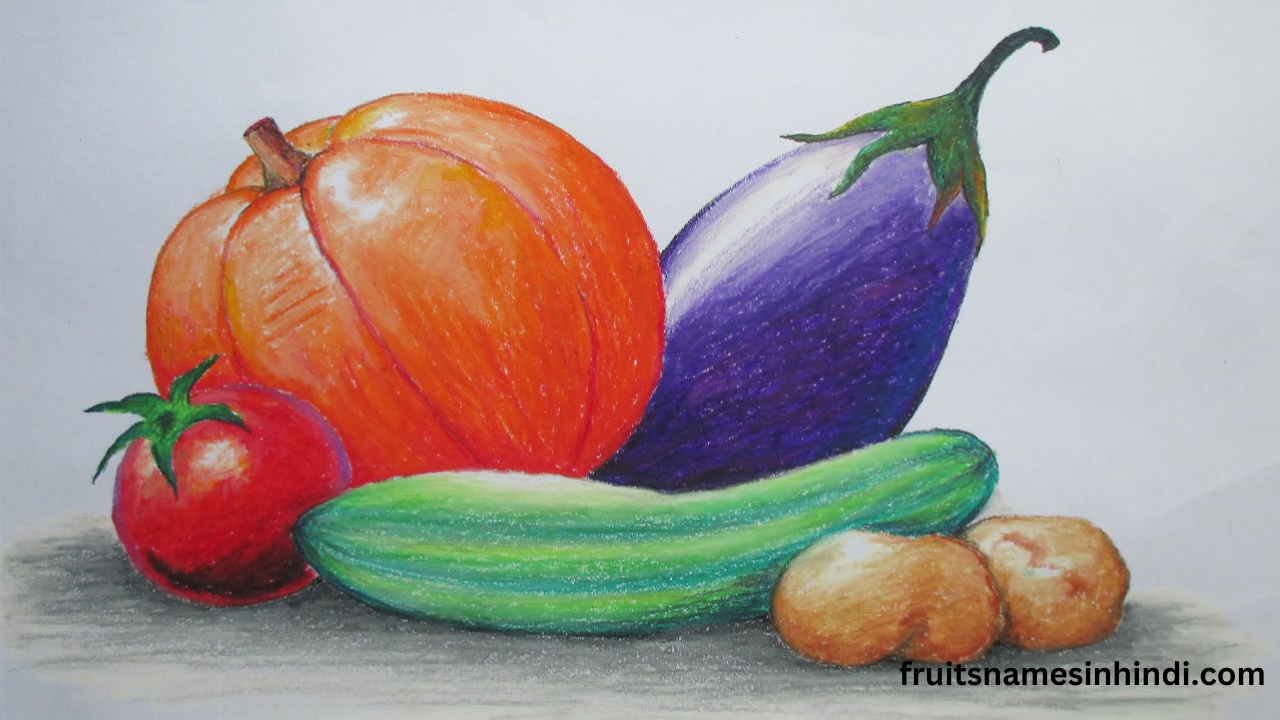
Engaging Crafts and Activities for Kids
Make learning vegetable names fun for kids with these simple and creative ideas:
1. Vegetable Painting
You may use cut pieces of okra (bhindi), potatoes (aloo) or carrots (gajar) to make nice prints on paper. Using vegetables: paint the vegetable pieces with paint then press on to paper to make beautiful patterns on paper.
2. Vegetable Matching Game
Make the cards where whichever side has the name of the vegetable in Hindi and English, and the other side has the picture of the vegetable. The pictures can be matched with the names.
3. Grocery Store Scavenger Hunt
Kids should be taken to the market to be asked in Hindi for the names of the vegetables they want to be taken or bought. Ask them to recognize the names of all those vegetables in English if known. It is important because it enables them to repeat the subject matter over and over in a fun way.
4. Create a Vegetable Chart
EU kindly requests the children to draw their favorite vegetables and write the name of the vegetables in Hindi and English on the drawing. Tape the chart on the wall in their bedroom where they can see it several times a day.
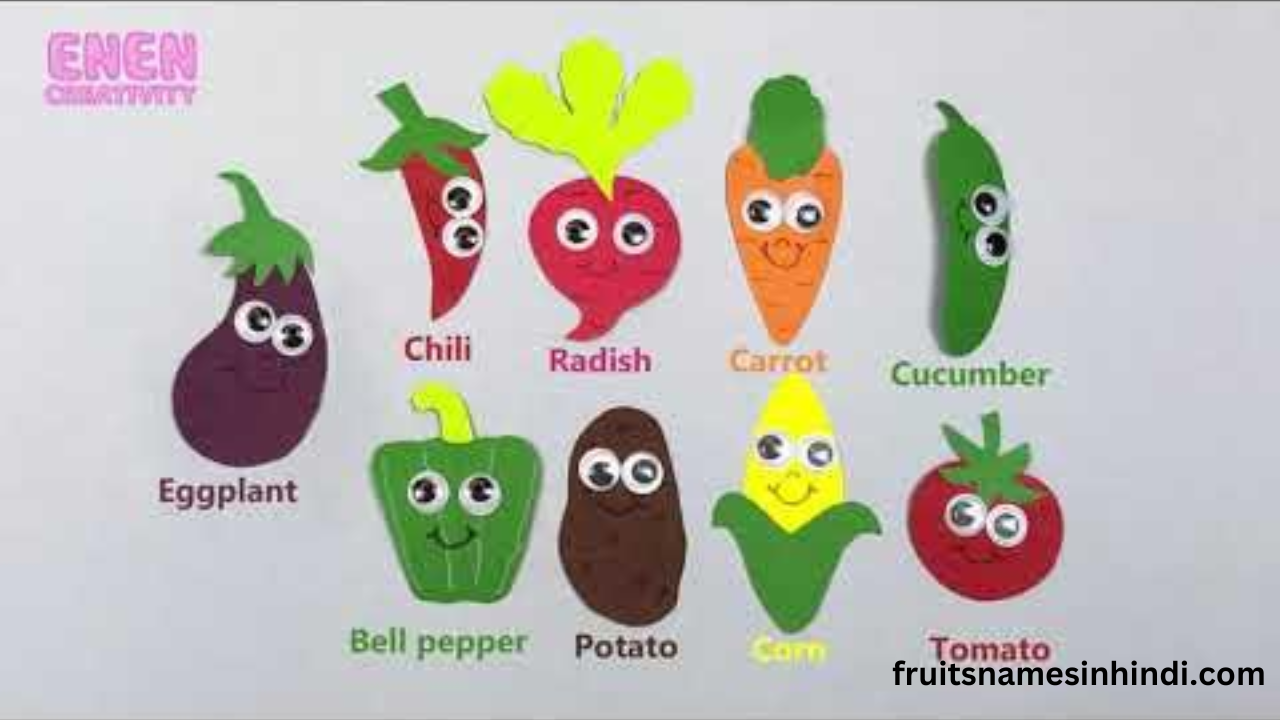
Tips to Remember Sabjiyon ke Naam
- Use Flashcards: Create picture Flashcards of vegetables’ names written in both languages.
- Practice with Songs: As for the vegetable names, there are also many Hindi rhymes and songs that can be used to teach the child.
- Play Memory Games: A set of vegetable name cards can be used in testing memory strength and general effectiveness.
- Daily Usage: Introduce the names into daily common practices for example, while preparing or consuming foods.
Conclusion
It is more than just knowing the Sabjiyon ke naam; it is the gateway to knowing cultures, improving communication and positively learning. With this guide, you can easily point out a vegetable or name more than 120 types of vegetables in Hindi as well as in English. Well, the next time you go food shopping or prepare a meal, challenge yourself and leave your favorite sabji name in the section below.
